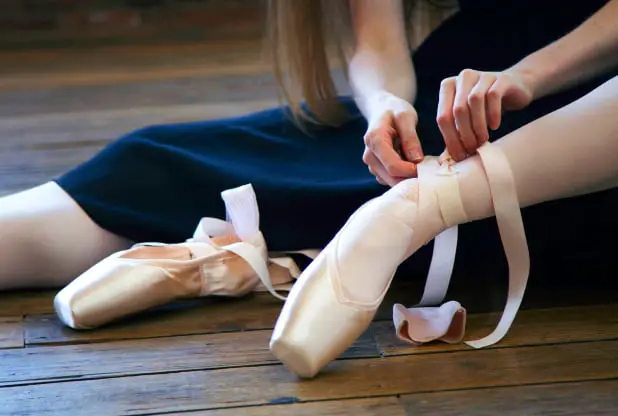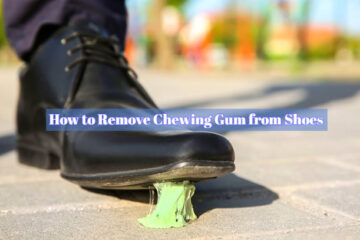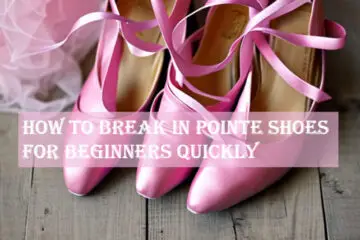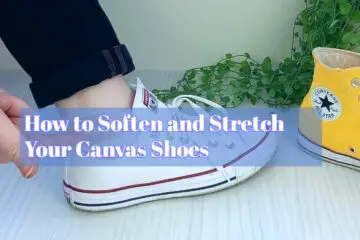As a passionate ballet dancer, nothing feels better than slipping on a brand new pair of ballet shoes. The satin moulds perfectly to your feet, the ribbons crisscross just so, and the pointe feels delightfully grippy. You feel like you’re walking on air when you do a few relevés or piqué turns in those pristine slippers.
But we all know that new ballet shoe feeling unfortunately doesn’t last forever. With regular wear and tear, those shoes you lovingly broke in will start to lose their shape, develop holes, and feel flimsy underfoot.
So when is it time to retire your well-worn ballet slippers and invest in a fresh pair? Read on to find out just how long ballet shoes really last, what factors impact their lifespan, and tips for making them last as long as possible. Grand jeté your way through this guide and your next recital or performance will be your best one yet – with zero slipping foot issues.

How Long Do Ballet Shoes Generally Last?
The short answer: is anywhere from 1 to 6 months.
But that hugely variable lifespan depends on a myriad of factors. Professional ballet dancers can easily plow through a new pair every 1-2 weeks, while occasional recital students may get 6 months or more out of those precious shoes.
The frequency and intensity of your ballet training is the number one determiner of how rapidly you’ll wear out those slippers. But the specific type of shoe also plays a role, as do the care and maintenance habits you use to treat them well.
Ready to dig into the nitty gritty details? Let’s break down exactly what goes into determining the lifespan of your ballet shoes.
What Factors Affect How Long Ballet Shoes Last?

1. Frequency of Use
It likely goes without saying, but the more often you wear those ballet shoes, the faster you’ll wear them out. Professionals who train every single day can easily go through a pair or more per week. Compare that to a recreational adult ballet student who takes class twice a week – they may get a solid 2-3 months from their shoes.
For young dancers taking a one hour class 2-3 days a week, count on 2-4 months of use before it’s time to retire those well-loved slippers. If you’re gearing up for recital season with extra rehearsals, you may need to budget for 1-2 extra pairs since the shoes will wear out faster with all those extra practice hours.
2. Intensity of Use
It’s not just quantity of wear that impacts ballet shoe lifespan, but also the quality and intensity of your training. Advanced dancers doing lots of jumps, turns, and quick footwork will see excess wear and tear compared to beginners still mastering basic barre exercises.
Pointe shoes in particular take a beating from the intense pressure and contact with the floor during pointe work. Frequent relevés, pirouettes, and balances on pointe can mean saying goodbye to those shoes more quickly.
Performance schedules also intensify the demands placed on your pointe shoes. All those extra rehearsals prepping for a big show require you to be on pointe a lot more often than usual classes.
And performance adrenaline can mean dancers hit the choreography harder than normal during shows. No wonder it’s common to go through several pairs leading up to a major production!
3. Type of Shoe
Not all ballet slippers are constructed exactly the same, so the specific type you wear impacts durability. Here’s how long different ballet shoes tend to last:
- Split Sole Slippers: 1-2 months
- Full Sole Slippers: 2-3 months
- Pointe Shoes: 2 weeks to 1 month
Split sole shoes designed to mold perfectly to the foot have less structure and wear out most quickly. The more substantial full sole slippers provide a bit more support for longer wear.
But pointe shoes face the most demanding performance requirements, making their lifespan weeks not months. Some pros even re-pad and “dead” their shoes between performances to keep them usable a bit longer!
4. Construction & Material Quality
Higher end ballet shoes made by prestigious dancewear brands using premium materials hold up longer under frequent use. Well constructed shoes keep their shape better and have less issues with shredding, holes, and sole separation. Cheaper slippers with inferior design and materials wear out most rapidly.
The quality and thickness of the pointe box also impact durability – more substantial boxes withstand repeated relevés and bouncing on pointe better. However, the trade off may be less optimal flexibility. Finding the right balance is key.
Hand-made shoes also tend to last longer than mass-produced versions, although you’ll pay more for that quality craftsmanship. Some dancers even prefer custom shoes made just for their feet by a shoemaker.
5. How You Break Them In
How you initially break in those new ballet shoes influences the lifespan you’ll get out of them. If you try to force a hard, abrupt break-in, that puts excessive strain on the materials right from the start.
Instead, ease into your new shoes gradually to allow them to mould to your feet in a flexible way. Doing some exercises at home like relevés and développés gently conditions them before your first full class.
Avoid soaking or harshly forcing curves until the shoe naturally softens. Letting them adjust slowly helps prevent ripping and extend how long they last. Be extra patient breaking in pricey pointe shoes so they hold their structure as long as possible.
6. How You Care For Your Shoes
Last but not least, the right maintenance and storage habits maximize the lifespan of your ballet shoes. Here are some ways to make them last:
- Allow shoes to completely dry out between wears to prevent bacteria or smell. Stuff with tissue paper or cloth to hold the shape.
- Spot clean canvas and satin after each use to prevent salt and dirt buildup, which degrades materials.
- Avoid harsh cleaners. A gentle brushing or light soap and water keep them fresh.
- Store shoes properly in shoe bags to prevent dust and debris damaging the shoe over time in your dance bag. Roll and tie ribbons to prevent creasing.
- Rotate between multiple pairs of pointe shoes so you aren’t wearing the same pair two days running. The materials last longer with a rest day in between.
- Repair small holes right away with glue or tape. Sew elastics and ribbons tightly to avoid looseness.
- Re-pad pointe tips with dense felt padding when they get too compressed and thin.
With the right care, you can extend the lifespan of those ballet slippers by weeks or months. It’s worth taking a few extra minutes to make them last!
Now that you know what impacts how long your shoes last, let’s break down the typical lifespan of different ballet shoe types.
Tips to Make Your Ballet Shoes Last Longer

Now that you know approximately how long your ballet shoes should last, what can you do to maximize their lifespan? Here are some helpful tips and tricks:
Break Them In Slowly: New ballet shoes always feel stiff! But resist the urge to forcefully bend and stretch them to hurry the break-in process. Doing so weakens materials right from the start. Instead, gently wear them at home to allow them to naturally conform to your feet before intense classes.
Dry Thoroughly Between Uses: Never store ballet shoes damp or sweaty. Fungus and bacteria breed in the moist environment, degrading fabrics rapidly. Stuff shoes with paper to absorb moisture and hold the shape as they dry out.
Spot Clean: Salt, dirt, and grime wears down ballet shoes. Gently clean canvas, satin, and soles after each use with mild soap and water or shoe cleaner. A soft bristled brush also lifts dirt from crevices.
Store Properly: Use cloth ballet shoes bags to prevent dust and debris from damaging shoes in your dance bag. Roll up and tie ribbons neatly to avoid creases.
Rotate Shoes: Letting pointe shoes fully rest and dry between wears makes them last longer. If possible, switch between 2-3 pairs so you’re not using the same shoes day after day.
Make Quick Repairs: Don’t ignore small holes or loose stitches. Sew elastics and ribbons right away to avoid bigger problems. Apply glue or tape on holes to prevent tears spreading.
Re-pad: Add dense felt padding to pointe shoe tips when they compress and flatten. This extends their usability a few extra days.
Buy Quality: Cheap ballet slippers wear out fastest! Invest in reputable brands like Freed, Bloch, Grishko, Gaynor Minden, Sansha, etc. for more durable construction.
A little extra TLC for your ballet shoes goes a long way. Treat them well so they support you through daily dance classes!
When Is It Time to Replace Your Ballet Shoes?
Wondering when it’s finally time to retire those tired old ballet shoes for a fresh pair? Watch for these telltale signs it’s replacement time:
- Holes, tears or canvas pulling away from the sole
- Excess cracking or flaking leather
- Pointe tips that won’t hold their shape, even after repadding
- Ribbons or elastics so stretched out they no longer stay tied or fitted
- Bad odor you can’t remedy with cleaning
- Lacking grip and traction on studio flooring
- Feeling unstable or wobbly during barre exercises
- Pain or abrasion spots on feet from lack of padding and support
Don’t try to overextend shoes past their prime – foot issues like blisters, calluses and even injuries can occur. The right amount of padding and grip underfoot is crucial for safe dancing.
While it can be hard to say goodbye to that perfectly broken-in pair, you’ll feel the difference in newer shoes with adequate structural integrity. Give those weary feet an upgrade!
Conclusion
A favorite trusty pair of broken-in ballet shoes feels like an extension of your own feet. The thought of tossing them in the bin and starting anew on a fresh pair can be dismaying.
But pushing damaged and worn out ballet shoes past their expiration date can undermine your technique, performance, and most importantly, foot health. Safety should come first!
Now that you know roughly how long ballet shoes last and how to optimize their lifespan, you can keep your feet primed for even the most demanding rehearsals and productions. Monitor signs of wear, maintain them well, and know when it’s time to retire shoes to avoid injury.
Here’s to doing what you love in ballet shoes that make your feet look and feel arabesque-ready at all times. May your next recital or show be your greatest one yet, with pointe work that feels effortless and shoes working flawlessly to support every graceful move. Now let’s dance!
Frequently Asked Questions
How often should ballet shoes be replaced?
Ballet shoes typically need to be replaced every 1-6 months on average. Professionals may go through shoes weekly with intense daily training, while recreational dancers can make a pair last up to 6 months. The frequency of your classes, the type of shoe, and how well you care for them impacts lifespan. Watch for signs of wear and replace them before lack of support causes injury.
Do split or full sole last longer?
Full sole ballet shoes generally last longer than split soles – about 2-3 months versus 1-2 months with regular use. The thicker sole provides more reinforcement for extended wear, while split soles mold to the foot for a custom fit at the expense of less durability.
How long should pointe shoes last?
Expect pointe shoes to last around 2 weeks to 1 month on average. The intense pressure and contact with the floor during pointe work rapidly wears down their structure. Professionals may wear out shoes in a week or less with frequent rehearsals and performances. Carefully monitor pointe boxes and padding condition to avoid compromising technique or risking injury dancing on dead shoes.
How can I make my ballet shoes last longer?
Break shoes in slowly, dry thoroughly between uses, spot clean, store properly, rotate between pairs, make quick repairs, re-pad pointe tips, and invest in quality brands for the most lifespan from your ballet shoes. Poor maintenance leads to excess wear, while careful care optimizes their durability.
What are signs it’s time to replace ballet shoes?
Replace ballet shoes when you see excessive holes/tears, heavy cracking, flattened pointe box, stretched out elastics/ribbons, foul odors, lack of floor grip, wobbliness, and pain indicating lack of support. Don’t prolong shoes past their prime, as worn out shoes put you at risk for blisters, calluses and even injury. Prioritize healthy feet.
Should I get custom ballet shoes?
Custom shoes tailored specifically for your feet tend to last longer and feel more comfortable than mass manufactured shoes. However, they are more expensive. Have an experienced shoemaker or fitter advise you on whether custom shoes make sense for your level of training, technique, and budget. They are most beneficial for professionals dancing rigorously each day.
How many pairs of pointe shoes should I own?
Ideal pointe shoe rotation is 3-4 pairs worn in sequence, never on consecutive days. Letting shoes fully dry and rest 24 hours between wears extends their lifespan significantly compared to dancing daily on the same pair. Plan your pointe shoe budget accordingly!
What’s better: canvas or leather ballet shoes?
For recreational dancers, canvas and leather last comparably long. Leather better resists stretching but requires more breaking in. Canvas molds quickly but doesn’t offer as much support. Advanced and professional dancers tend to prefer leather for durability and structure. Match your shoe material to your training level.
Should I repair holey pointe shoes or buy new?
Once pointe boxes lose their structural integrity, it’s risky to try salvaging them with repairs. New padding and ribbons can temporarily extend useable life, but holes may indicate the box itself has weakened and will no longer support you properly. Don’t compromise your safety trying to save money.



